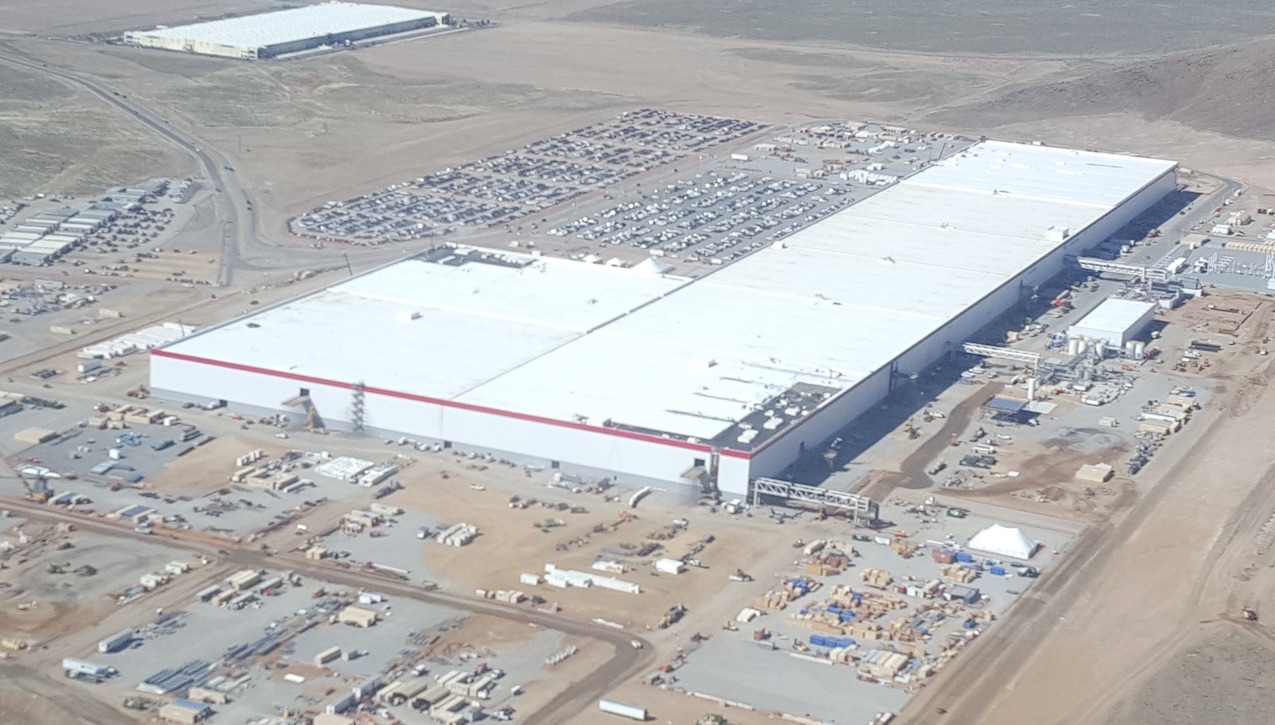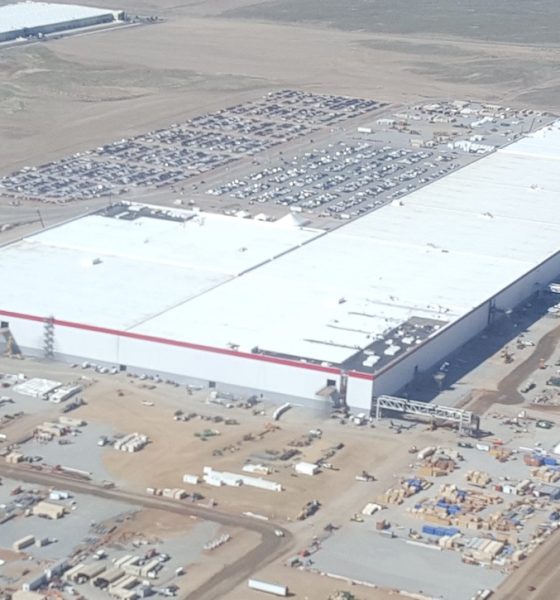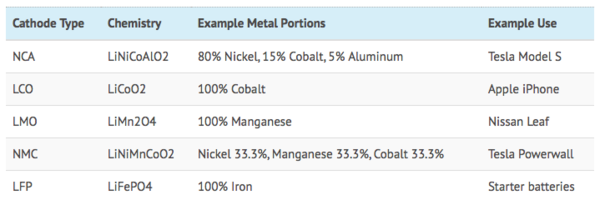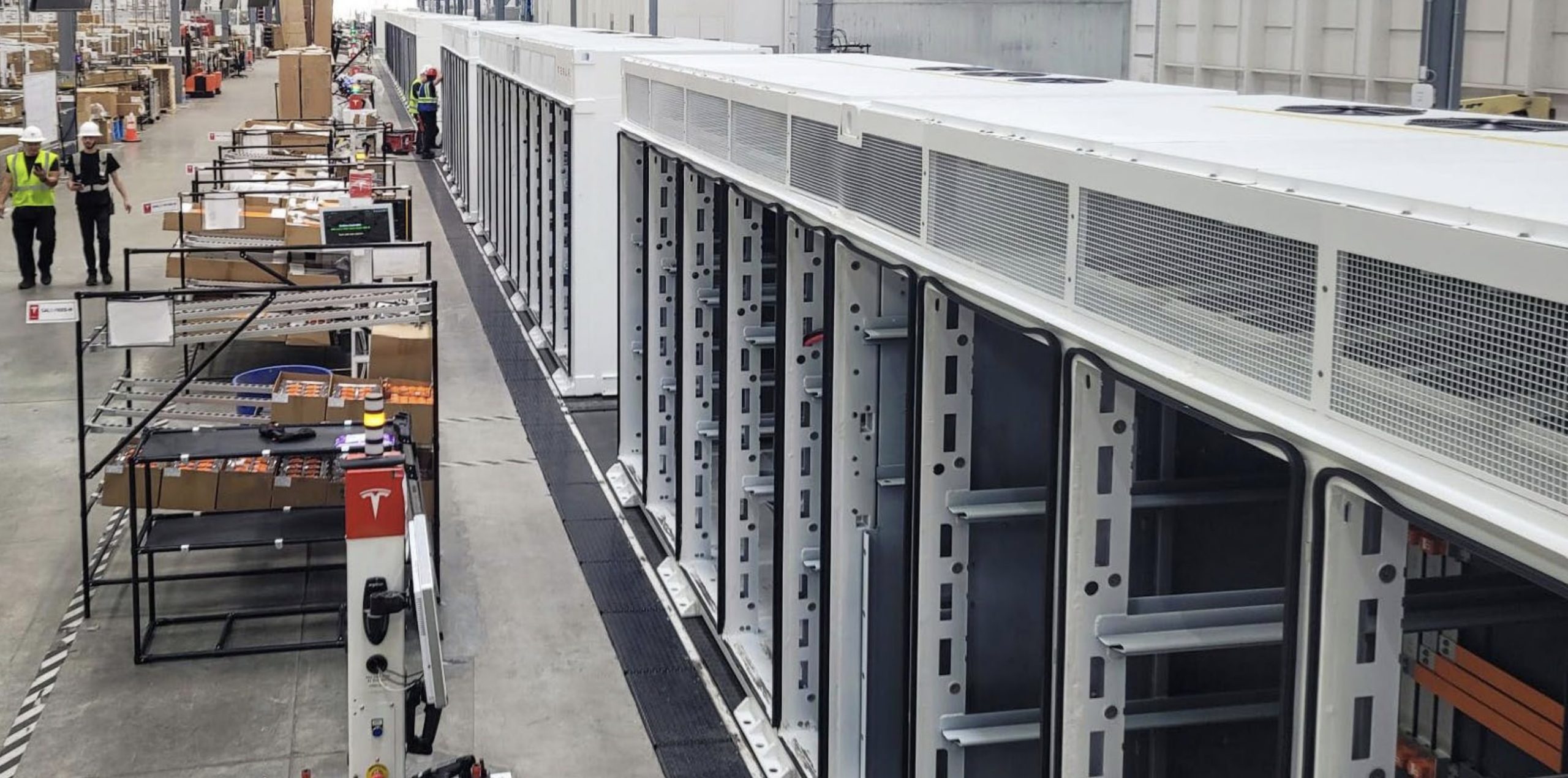

Energy
Tesla battery expert says they’ve doubled lithium-ion battery cell life
The following post was originally published on EVANNEX
Tesla [NASDAQ: TSLA] is not standing still when it comes to improving lithium-ion technology and reducing battery costs. It was recently reported that Tesla’s battery partner, Panasonic, announced that, “We think the existing technology can still extend the energy density of Li-ion batteries by 20% to 30%. But there is a trade-off between energy density and safety. So if you look for even more density, you have to think about additional safety technology as well. Solid-state batteries are one answer.”
But many feel solid state batteries are years away. That said, are there other next-gen solutions that might come to fruition sooner? It turns out that Tesla has one of the world’s premiere battery experts, Jeff Dahn, working on a myriad of potential solutions (see below). And Dahn recently explained that: “doubling the lifetime of the [battery] cells used in the Tesla products… was the goal of the project and it has already been exceeded. We are not going to stop… we are going to go as far as we can.” Dahn said that his Tesla research is already “going into the company’s products.”
Above: Jeff Dahn explains his role with Tesla
Tesla’s new 2170 lithium-ion battery will soon appear in the Model 3. In addition to improved battery chemistry, there are ongoing cost reductions taking place as “Tesla has become the largest buyer of li-ion batteries and now [with the Gigafactory] it is trying to become the largest producer of li-ion batteries.” Kurt Kelty, Tesla’s longtime director of battery technology, is finding economies of scale sourcing raw materials: “Nickel, Cobalt, Graphite and lithium [which serve] as the biggest cost drivers for the overall battery cost.” It’s already been confirmed that Tesla has reduced battery costs overall by 35%.
Visual Captialist also points out another area where battery improvements may exist — the cathode: “Cathode choice is a major factor for determining battery energy density, and cathodes also typically account for 25% of lithium-ion battery costs. That means the cathode can impact both the performance and cost pieces of the $/kWh equation – and building a better cathode will likely be a key driver for the success of the green revolution… [and] cathode development has many exciting prospects. These include concepts such as building cathodes with layered composite structures or orthosilicates, as well as improvements to the fundamental material processes used in cathode assembly.”

Above: Tesla and other examples of commercialized cathode formulations and the metals needed for them – aside from lithium (Source: Visual Captialist via EVANNEX)
Visual Capitalist* notes that, “The type of cathode chosen can affect the energy density, power density, safety, cycle life, and cost of the overall battery, and this is why researchers are constantly experimenting with new ideas and combinations… [and] as these new technologies are applied, the cost of lithium-ion batteries will continue to decrease. In fact, experts are now saying that it won’t be long before batteries will hit $80/kWh – a cost that would make EVs [electric vehicles] undeniably cheaper than traditional gas-powered vehicles.” Check out the infographic below for more clues into how changes to the cathode could represent further improvements to the lithium-ion battery.

Cybertruck
Tesla updates Cybertruck owners about key Powershare feature

Tesla is updating Cybertruck owners on its timeline of a massive feature that has yet to ship: Powershare with Powerwall.
Powershare is a bidirectional charging feature exclusive to Cybertruck, which allows the vehicle’s battery to act as a portable power source for homes, appliances, tools, other EVs, and more. It was announced in late 2023 as part of Tesla’s push into vehicle-to-everything energy sharing, and acting as a giant portable charger is the main advantage, as it can provide backup power during outages.
Cybertruck’s Powershare system supports both vehicle-to-load (V2L) and vehicle-to-home (V2H), making it flexible and well-rounded for a variety of applications.
However, even though the feature was promised with Cybertruck, it has yet to be shipped to vehicles. Tesla communicated with owners through email recently regarding Powershare with Powerwall, which essentially has the pickup act as an extended battery.
Powerwall discharge would be prioritized before tapping into the truck’s larger pack.
However, Tesla is still working on getting the feature out to owners, an email said:
“We’re writing to let you know that the Powershare with Powerwall feature is still in development and is now scheduled for release in mid-2026.
This new release date gives us additional time to design and test this feature, ensuring its ability to communicate and optimize energy sharing between your vehicle and many configurations and generations of Powerwall. We are also using this time to develop additional Powershare features that will help us continue to accelerate the world’s transition to sustainable energy.”
Owners have expressed some real disappointment in Tesla’s continuous delays in releasing the feature, as it was expected to be released by late 2024, but now has been pushed back several times to mid-2026, according to the email.
Foundation Series Cybertruck buyers paid extra, expecting the feature to be rolled out with their vehicle upon pickup.
Cybertruck’s Lead Engineer, Wes Morrill, even commented on the holdup:
As a Cybertruck owner who also has Powerwall, I empathize with the disappointed comments.
To their credit, the team has delivered powershare functionality to Cybertruck customers who otherwise have no backup with development of the powershare gateway. As well as those with solar…
— Wes (@wmorrill3) December 12, 2025
He said that “it turned out to be much harder than anticipated to make powershare work seamlessly with existing Powerwalls through existing wall connectors. Two grid-forming devices need to negotiate who will form and who will follow, depending on the state of charge of each, and they need to do this without a network and through multiple generations of hardware, and test and validate this process through rigorous certifications to ensure grid safety.”
It’s nice to see the transparency, but it is justified for some Cybertruck owners to feel like they’ve been bait-and-switched.
Energy
Tesla starts hiring efforts for Texas Megafactory
Tesla’s Brookshire site is expected to produce 10,000 Megapacks annually, equal to 40 gigawatt hours of energy storage.

Tesla has officially begun hiring for its new $200 million Megafactory in Brookshire, Texas, a manufacturing hub expected to employ 1,500 people by 2028. The facility, which will build Tesla’s grid-scale Megapack batteries, is part of the company’s growing energy storage footprint.
Tesla’s hiring efforts for the Texas Megafactory are hinted at by the job openings currently active on the company’s Careers website.
Tesla’s Texas Megafactory
Tesla’s Brookshire site is expected to produce 10,000 Megapacks annually, equal to 40 gigawatt hours of energy storage, similar to the Lathrop Megafactory in California. Tesla’s Careers website currently lists over 30 job openings for the site, from engineers, welders, and project managers. Each of the openings is listed for Brookshire, Texas.
The company has leased two buildings in Empire West Business Park, with over $194 million in combined property and equipment investment. Tesla’s agreement with Waller County includes a 60% property tax abatement, contingent on meeting employment benchmarks: 375 jobs by 2026, 750 by 2027, and 1,500 by 2028, as noted in a report from the Houston Business Journal. Tesla is required to employ at least 1,500 workers in the facility through the rest of the 10-year abatement period.
Tesla’s clean energy boom
City officials have stated that Tesla’s arrival marks a turning point for the Texas city, as it highlights a shift from logistics to advanced clean energy manufacturing. Ramiro Bautista from Brookshire’s economic development office, highlighted this in a comment to the Journal.
“(Tesla) has great-paying jobs. Not just that, but the advanced manufacturing (and) clean energy is coming to the area,” he said. “So it’s not just your normal logistics manufacturing. This is advanced manufacturing coming to this area, and this brings a different type of job and investment into the local economy.”
Energy
Tesla and Samsung SDI in talks over new US battery storage deal: report
The update was related by industry sources and initially reported by South Korean news outlets.

Recent reports have suggested that Tesla and Samsung SDI are in talks over a potential partnership to supply batteries for large-scale energy storage systems (ESS).
The update was related by industry sources and initially reported by South Korean news outlets.
ESS batteries to be built at Samsung’s Indiana plant
As noted in a report from Korea JoongAng Daily, the demand for energy storage systems has been growing rapidly in North America, thanks in no small part to the surge in AI investments across numerous companies. With this in mind, Tesla has reportedly approached Samsung SDI about a potential battery supply deal.
The deal is reportedly worth over 3 trillion Korean won (approximately $2.11 billion) and will span three years, according to The Korea Global Economic Daily. A battery supply deal with Samsung SDI could make sense for Tesla as the company already has a grid-scale battery, the Megapack, which is perfect for industrial use. Samsung SDI could simply supply cells for the EV maker.
Production of the batteries would reportedly take place at Samsung SDI’s joint venture factory with Stellantis in Indiana, which is currently under construction. Samsung SDI recently announced plans to use part of that plant’s EV lines to produce cells for ESS, with a targeted capacity of 30 GWh by the end of next year.
Tesla and Samsung’s partnership
At present, only a handful of manufacturers, including Korea’s LG Energy Solution, Samsung SDI, SK On, and Japan’s Panasonic, are capable of producing energy storage-scale batteries domestically in the United States. A Samsung SDI official issued a comment about the matter, stating, “Nothing has been finalized regarding cooperation with Tesla.”
The possible energy storage system deal adds another layer to Tesla’s growing collaboration with Samsung, which is already in line as a partner in the upcoming production of Tesla’s AI5 and AI6 chips. Early sample manufacturing of the AI6 is expected to begin in South Korea, with mass production slated for Samsung’s Texas-based Taylor foundry when it starts operations.
The AI6 chip will power Tesla’s next wave of high-volume projects, including the Optimus humanoid robot and the autonomous Cybercab service. Musk has called the partnership with Samsung a “real collaboration,” adding that he personally plans to “walk the line” at the Taylor facility to speed up progress.









